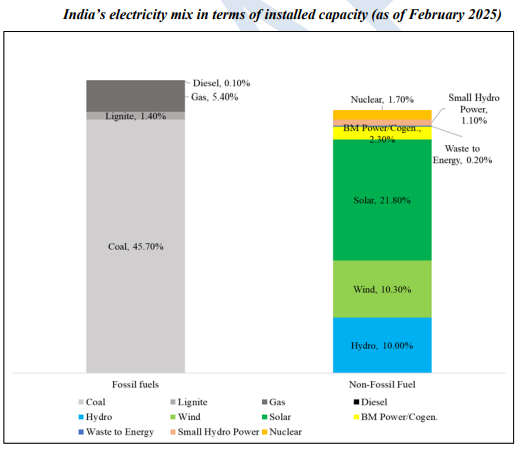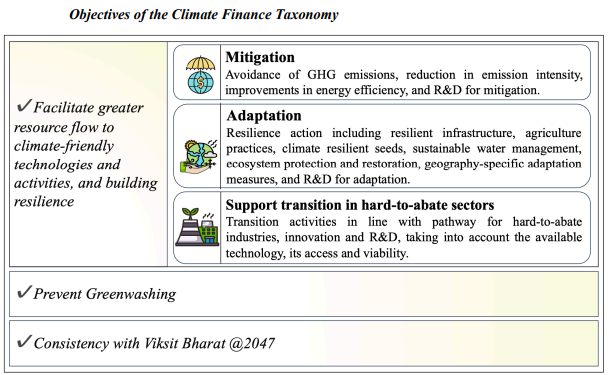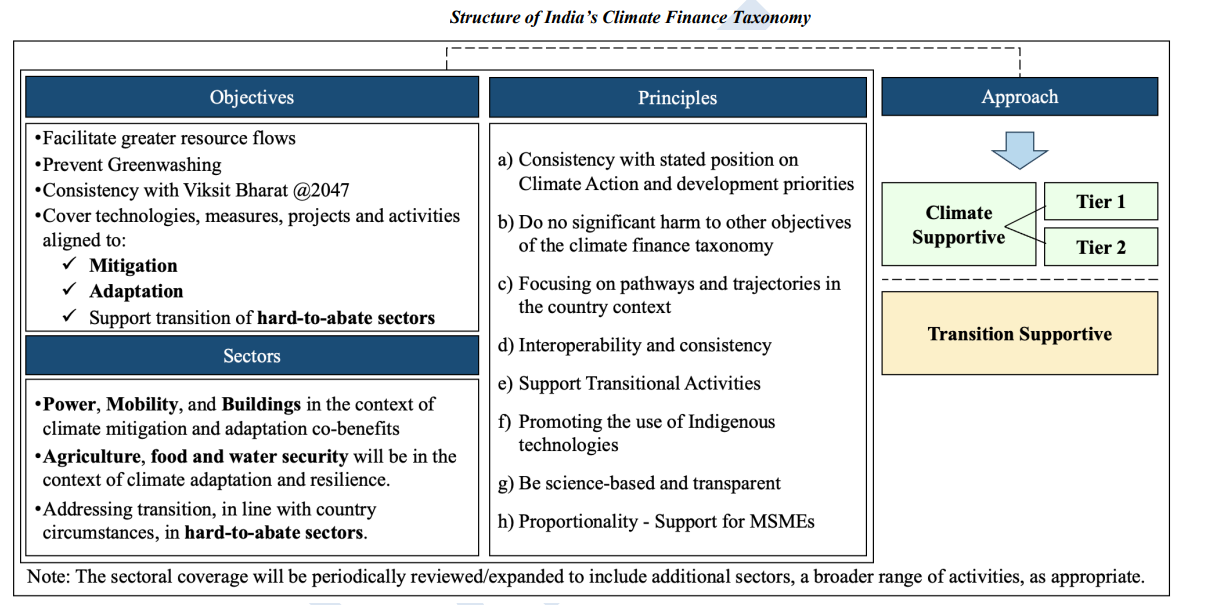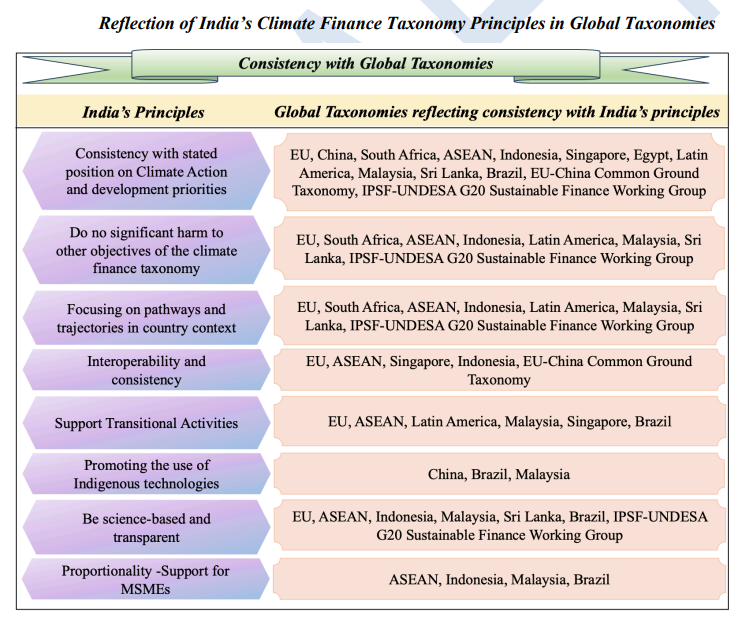Mains Syllabus: GS II - Government policies and interventions for development in various sectors and issues arising out of their design and implementation.
Why in the News?
Recently, the Finance Ministry has unveiled draft ‘climate taxonomy’ document to aid clean energy investment.
What is the need for Climate Finance Taxonomy?
|
Historical responsibility of emissions |
|
What is the present status of India’s climate action?

|
Energy Diversification Initiatives of India |
|
|
Energy Efficiency Initiatives of India |
|
What are the objectives of the Climate Finance Taxonomy?


What are the design features of India’s climate finance taxonomy?
|
Aspects of Taxonomy Framework |
|
|
There are broadly two aspects to framing a taxonomy - qualitative and quantitative. |
|
|
Qualitative |
Quantitative |
|
It consists of exposition of the objectives and principles that guide the identification of activities and projects as being climate-relevant. |
It is reflected in the form of performance thresholds like the expected extent of GHG savings, best-in-class performance, and improvements in emission intensity. |
|
Qualitative elements can define the core principles guiding green activities and align with India’s NDCs and SDGs. |
Quantitative elements, such as GHG intensity reduction thresholds and sustainability performance metrics, can provide measurable targets for transparency and accountability. |
What are the principles of the climate finance taxonomy?

Reference
EvettSmit 2 months
India's Climate Finance Taxonomy is a crucial step. It guides investments towards sustainable projects, helping the nation meet its climate goals. Think of it like navigating a challenging level in the snake game; strategic planning and avoiding obstacles are key to success. This taxonomy provides the roadmap, ensuring financial resources are channeled effectively and efficiently, ultimately leading to a greener future for India.